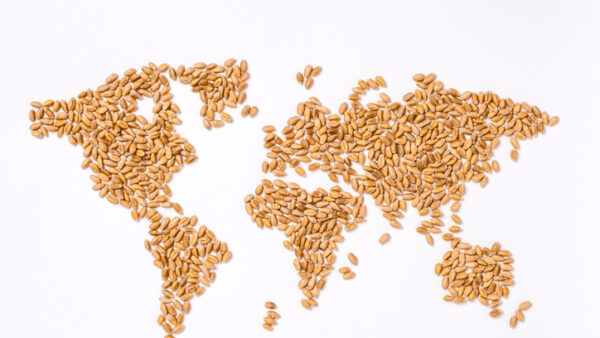Seed World sits down with three authors of the latest OECD-FAO ag outlook report to get their take on the trends and what it means for the seed industry.
For most, success doesn’t just happen; it is planned for, be it months, years or decades. For those in agriculture, knowing what’s to come in the decade ahead can help businesses better plan for success.
In July, the Organisation for Economic Co-operation and Development (OECD) and Food and Agriculture Organization (FAO) of the United Nations released its “OECD-FAO Agriculture Outlook 2018-2027” with a special focus on the Middle East and North Africa.
The report it gives us a brief view at what to expect in the coming decade; however, it should be noted that certain things can change the course of the outlook.

“We assume stable weather conditions and no policy changes,” says Hubertus Gay, OECD trade and agriculture directorate and one of the report’s authors. “With weather fluctuations, we cannot say exactly what will happen. We also didn’t include things such as Brexit or trade issues, but the outlook is a reference point.”
One of the report’s key takeaways is the shifting food patterns. In a nutshell, per capita consumption of basic staples (cereals, roots and tubers) will stagnate, given saturation of demand. While demand growth for meat products is expected to slow, it’s on the rise for dairy products. And finally, developing countries witness accelerating growth in per capita consumption of sugar and vegetable oil.
“The outlook indicates that population and income growth, with urbanization and dietary preferences, will drive global food demand,” says Holger Matthey, FAO economist and team lead for the Medium-term Outlook and Market Analysis. “Global food consumption, as measured by caloric availability, will rise to 3,050 calories per person per day by 2027.”
Another of the report’s authors, Koen Deconinck, an OECD ag policy analyst, explains that with the exception of India and a few other developing regions, the average consumption patterns don’t show much change. However, he says strong population growth affects food patterns, particularly in sub-Saharan Africa.
“Even if per person consumption doesn’t change much, total demand for food, including grain, will increase strongly,” Deconinck says.
Matthey adds that while improvements in the global availability of, and access to, food are expected in the coming years, many countries will continue to be burdened with undernourishment and different forms of malnutrition.
“We are going to see a rise in the ‘triple burden’ of malnutrition: the coexistence of food security, undernutrition and overweight and obesity,” he says.
Dairy on the Rise
While the demand for agriculture commodities is declining, there’s one commodity that’s expected to break out and increase: dairy.
“India is influencing dairy dramatically,” Gay says. “Consumption is growing in India, because of the economic growth and population growth. The rest of the world doesn’t have that dramatic driver.”
“Average incomes in India are growing around 6 percent per year,” Deconinck says. “Despite this growth, meat consumption in India will probably remain relatively low. Instead of meat, we see India consuming more dairy as a source of protein.”
However, countries like India aren’t the only reason dairy has become the fastest growing livestock sector. Matthey says that developed countries are causing a rise in dairy demand as well.
“Dairy demand in developed countries has been shifting for several years towards butter and dairy fat and away from substitutes based on vegetable oil,” he says. “This trend can be attributed to such factors as more positive health assessments on dairy fat, a change in consumer perceptions towards taste and towards less processed food, with the result that these products are increasingly used in bakery products and recipes.”
With the mixture of countries like India that prefer the protein from dairy, and developed countries likes the U.S. that prefer the taste of dairy, dairy products are still gaining momentum as other agriculture products fall behind.
Lower Food Prices
Despite the increased consumption and demand for commodities, food prices are expected to fall due to productivity growth. But while lower prices don’t necessarily favor the farmer, there are a few who benefit from lower prices.
“In the end, the consumer benefits from lower prices,” Gay says. “Consumers won’t see the lower prices, but they’ll be able to get more food in comparison to the time they work, which is the biggest benefit of lower prices.”
However, that’s not to say that the farmers don’t win anything from lower prices. Gay says part of what contributes to lower prices is farmers’ interest in innovative techniques.
“Interest in productivity causes a lower decline,” Gay says. “Farmers with lower productivity are more affected by a price decline. Innovation pays off in agriculture, and it’s completely necessary. Innovation and productivity growth are necessary for farmers to get an edge.”
However, there is another source that also benefits from lower food prices.

“Another potential winner might be the planet,” says Deconinck. “Without productivity growth, we would need to use more land to produce food for a growing population. Since we see supply and demand are roughly balanced, we don’t need to sacrifice sustainability.”
Deconinck says that measures must still be taken to protect sustainability, but productivity growth reduces the pressure to increase the agriculture supply, which gives the planet a brighter future.
Matthey says that long-term low food prices won’t always be a positive, though. In rural areas, low food prices in the long-term can contribute to raising the incidence of extreme poverty and hunger.
“Low agriculture prices reduce the incomes of farmers, especially poor family farmers that produce staple food in developing countries,” Matthey says. “Family farmers must be empowered by tailored policies to face this situation, improve their productivity and have better access to markets.
“Prolonged periods of low prices for agricultural commodities may also give rise again to protectionism and market distorting subsidies in agriculture,” he continues. “Prices need to be remunerative to producers and affordable for consumers; all actors along the value chain can contribute by increasing productivity, conserving resources and keeping markets transparent.”
The Seed Industry’s Response
What exactly does all this mean for the seed industry and how should those involved respond?
“One of the messages for the seed industry should be that innovation and productivity growth is important for the entire agriculture sector,” Gay says. “The potential for more productivity starts with the seed. We don’t have much more land to give to farming, so the innovation that the seed industry can provide will help us in the years to come.”
By developing new innovative traits and seed treatments, the seed industry can provide the world with better crops that can survive more extreme conditions, such as drought. This would increase yield globally.
“In terms of crops, it might be interesting to mention that the global food demand for cereals is going to grow broadly in line with global population growth,” he says. “But anything that is used as feed will have a higher growth rate. For example, soybeans and maize will grow faster than wheat and rice.”
Gay says that seed companies should learn and work on getting into developing countries’ markets.
“Many developing countries have poor distribution channels,” he says. “Other countries are more reluctant than others to adapt to certain research methods. The seed industry would need to adapt to certain production limitations. It’s a big challenge.”
But Deconinck says there’s still hope. “In the past five years, there’s been some growth in the use of fertilizer and generic herbicides in sub-Saharan Africa. There’s a market developing, which means there might also be a market developing for good seed to complement these other inputs.”













